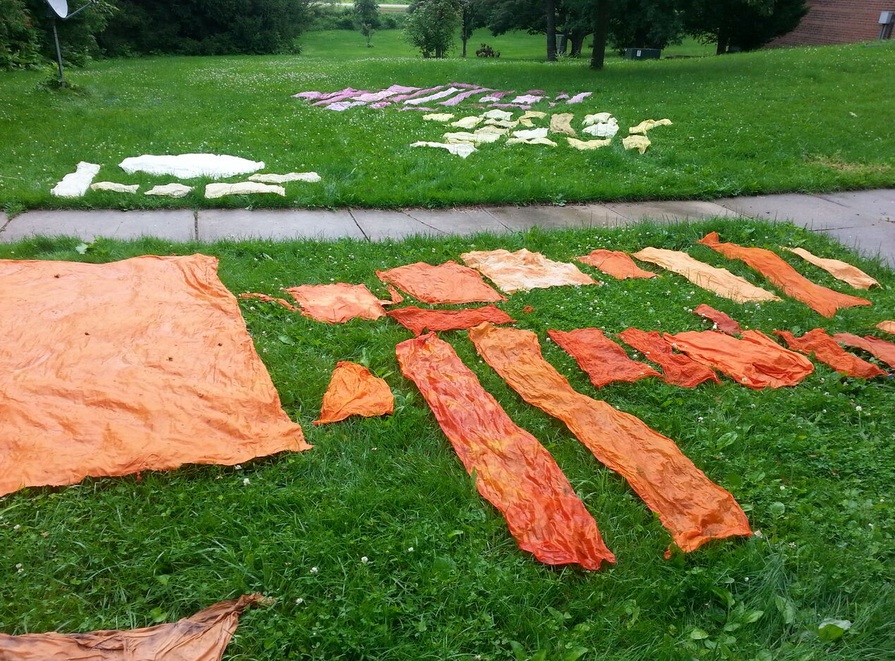Each week, we are emailed with questions from our natural dye community asking simple and complex questions that we thought might be worth sharing. Here are a handful from this week answered by natural dyer in chief, Kathy Hattori, Founder of Botanical Colors:
I have been printing with dye extracts on silk. My question is- once the fabric is mordanted, dunged, dyed, and steamed, can I over-dye the fabric without going through the mordant process again?
You don’t need to remordant for additional overdyeing. If it’s been a long time between the initial dyeing and overdyeing, (like several years), then I would remordant.
I wanted to dye a Nuno Felted Scarf I made in indigo. I did a test sample before I put the scarf in and noticed that the wool was stiff with a plastic feel to it. Then I remembered that wool doesn’t like high alkaline solutions. How does one dye wool in indigo? If you can’t, what dyes could I use to get blues and greens?
Wool needs careful handling in indigo vats due to the alkalinity. Dyers deal with this in the following ways:
-Some lower the pH of their vat to 9 to lessen the harshness of the vat.
-Some add dissolved Hide Glue to their vat to protect the protein fibers
-You can also use Saxon Blue, or liquid indigo to dye blue. It is indigo that has been converted to act like an acid dye and does not require a vat.

Love the liquid pomegranate with dark iron color but my experience with iron is that it makes the fabric a little rough?
You can lessen the harshness of iron by using as little as possible, in as cool of a dye bath as possible, and also for as short of a time as possible to achieve your color.
Is iron-mordanted cotton as effective as alum using powdered botanical dyes as far as color fastness goes?
Iron improves light fastness in some dyes. If you want to improve color fastness, try tannin and alum, or, aluminum acetate with a wheat bran or calcium carbonate post bath. Alum or aluminum sulfate alone on cotton is not sufficient to achieve satisfactory colors or fastness.

